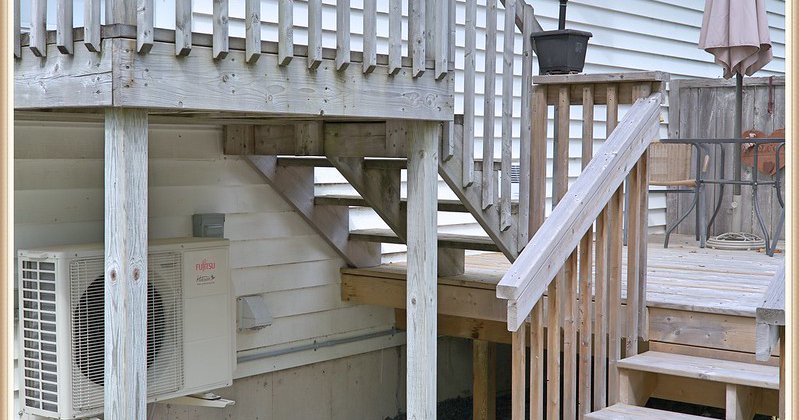We might have hoped that waste and cock-up were confined to the UK government’s procurement response to a global pandemic. But this New Year brought the first earnest of what we can look forward to with climate change. November’s ’10-point plan’ for Johnson’s ‘green industrial revolution’ – a term lifted from one of Corbyn’s popular manifesto promises – will, he claims, create green jobs, continue the PM’s mission to ‘level up’ across the country, and help drive a green recovery from covid-19. Seventh out of ten was to be the installation in our homes, schools and hospitals of 600,000 heat pumps every year by 2028, creating 50,000 new jobs by 2030.
No-carbon
At first sight, this was a heartening flagship commitment, since homes are responsible for 20% of UK CO2 emissions and a major opportunity to build back better to hit the zero carbon target. Heat pumps require a minimal level of electricity to power them, available from renewable sources: in short, heat pumps are green, a no-carbon option. It is also a massive commitment in job retraining, job creation and ramping up production, since the vast majority of the UK’s 29 million homes once surveyed will require upgrading – and that is without taking into account the need for wider retrofitting.
Boris’ promise includes no mention of retrofitting and who will pay for that. A bit like rolling out a massive testing programme without any provision for supporting covid victims to isolate, installing heat pumps in themselves is a wholly inadequate offer, when the level of heat they produce is less than we currently live with, so adding insulation, draught proofing and so forth to reduce the external heat required is essential to the success of any such scheme. Overall costs are estimated at more like £25 – 40,000 per home.
We began to see how serious Johnson was when the chancellor committed £1.5bn as a short-term economic stimulus for homeowners to launch its Green Homes Grant. The much-touted scheme, intended to last from September 2020 to March 2021, offered vouchers for up to £5000 to help cover the costs of replacing fossil fuel heat systems with renewable energy appliances in 600,000 green homes. Here in action was the neoliberal mantra that it is down to individuals rather than the Government to rise to the challenge. Take up seems to have been enthusiastic from renewable energy businesses recruiting staff for new green jobs and setting up call centres to deal with demand, as well as from eager potential customers.
Typically, details of the government contract to outsource the running of the scheme, awarded to a large American consulting corporation based in Virginia, were not published. But, the result was clearly disastrous. Applicants for vouchers and the installers who advised them found themselves tied up in bureaucratic processes for months on end. Only a tiny proportion were given the go ahead and work for these installations went unpaid. Customers began to give up, and small businesses to lay off their new green recruits to stay afloat. Insult was added to injury all round when the Green Homes Grant scheme wrote to thousands of applicants on Christmas Eve to say they were unable to verify their identity and that the quotes they had been given were too high. After four months, 20,000 homes seem to have received an upgrade. Talk of abandoning the scheme in April gave way to its extension to March 2022, but funding for the second year has been slashed to £320 million, taking a “wrecking ball to green jobs”, in the words of Frances O’Grady. It would be hard to think of anything more counterproductive by way of a flagship for a joined-up strategy that we are all participating in together.
The truth is, this was never seriously an option for homeowners to initiate. But a serious UK government, willing to put enough funding mechanisms in place, does have the agencies available. If the regulator put people on notice that this was what was required, local authorities and housing associations which now own the bulk of social housing would be the obvious partners to kickstart the process, using the grants to upgrade large amounts of housing, until this became the norm. They would have worked out the retrofitting standards on the way, ending up with a package ready for individual home-owners and the skilled workforce to deliver them.
Low-carbon
Enter the alternative way of heating our homes – hydrogen, a low carbon rather than a no-carbon option – and the natural gas industry lobbyists. The big gas-producers, BP, Shell, British Gas, Centrica, point out that with some potential modification to address corrosion, hydrogen can be pumped through the existing gas infrastructure into people’s homes. Hydrogen is currently produced predominantly from coal – Black Hydrogen. But they promise a transition, replacing coal with the electricity that can be produced from natural gas – Grey Hydrogen – combined with largely-yet-to-be-invented “carbon capture” technology – Blue Hydrogen, one day leading to Green Hydrogen, although no-one knows how.
Look again at the 10-point plan which undertakes only a low-carbon option for homes and we see Johnson hedging his bets. There are significant commitments to hydrogen techno-fixes, a “world–leading” carbon capture technology, and an entire town heated only by hydrogen by 2030, a showcase for which the Government puts aside £500 million.
For as long as this transition takes, it keeps intact the otherwise doomed market for natural gas. This might well be after Johnson leaves office. By then we may be more conversant with the formulae behind his jokes, but may never know how serious he was about cutting that 20% of UK CO2 emissions.
This piece was first published in the March edition of Splinters
PrintRosemary Bechler | Radio Free (2021-03-18T13:23:48+00:00) Black, grey, blue, green: how serious can Boris Johnson be?. Retrieved from https://www.radiofree.org/2021/03/18/black-grey-blue-green-how-serious-can-boris-johnson-be/
Please log in to upload a file.
There are no updates yet.
Click the Upload button above to add an update.
